- Home
- Michael Newton
The Texarkana Moonlight Murders: The Unsolved Case of the 1946 Phantom Killer Page 17
The Texarkana Moonlight Murders: The Unsolved Case of the 1946 Phantom Killer Read online
Page 17
When this case first came to the Bureau’s attention, the Director and Attorney General indicated an interest in the matter and the Field was instructed to follow the matter closely with the police so that immediate action could be taken in the event a Federal angle was developed. [One line deleted.]
ACTION TAKEN: SAC Morley was informed that his recommendation would be considered and that he would be advised in this matter. It was anticipated that suspect [name deleted] would be [1½ lines deleted]. Mr. Morley was instructed to immediately advise the Bureau of [½ line deleted].
RECOMMENDATION: It is recommended that SA [name deleted] be authorized to assist Sheriff Presley in [one line deleted] and as a cooperative measure to the local authorities in view of the heinousness of the offenses.
ADDENDUM: 2:45 P.M., 2/20/47—SAC Morley was advised that authorization was granted for Special Agent [name deleted] to conduct the interview, but for Bureau Agents to take no part in the removal. Mr. Morley stated that he would keep the Bureau advised by teletype.27
Reading between the lines—in this case, literally—we may surmise that the anonymous “definite suspect” was an inmate of the Texas state prison at Huntsville, perhaps about to be released at the conclusion of his sentence for some unrelated crime. The unnamed FBI agent traveled to Huntsville on February 25, with a promise to “furnish results of [the] interview.”28 There, oddly, the story ends. On February 26, agent Morley wired headquarters to report, “AFTER CONFERENCE WITH STATE DISTRICT JUDGE, SHERIFF, BOWIE COUNTY, TEXAS, DECIDED AGAINST [4½ lines deleted].”29
Decided against what? The interview, or pressing charges? Barring release of the complete uncensored file, we cannot say. But one thing is apparent: if the Texas suspect was about to be released in February 1947, he was definitely not Youell Swinney.
* * *
On March 1, 1947, Captain Gonzaullas wrote to Chief McLaughlin again, this time requesting information on suspect John LeRoy Ripley. Ripley had come to the Lone Wolf’s attention by circuitous means, when Sheriff Dwight Lee of Eddy County, New Mexico, wrote to Sheriff Presley in Texarkana, on February 11, 1947. Presley sent Lee’s letter to Gonzaullas four days later, and Texas Rangers arrested Ripley—an Arkansas native living in Fort Worth, Texas—on February 26. They photographed him, took his fingerprints, and then released him the same day when they found no previous criminal record on file. On March 1, Gonzaullas asked McLaughlin to have the FBI check Ripley’s prints. The lead went nowhere, and today we have no inkling as to why Presley was thought to be a Phantom suspect in the first place.30
Sheriff Presley had another suspect in his sights, meanwhile, though censorship of FBI files leaves only a tantalizing hint of what transpired. On March 4, 1947, the bureau’s Little Rock field office sent the following memo to headquarters:
Reference is made to your teletype of February 25, 1947, and to my teletype of February 26, 1947.
Special Agent [name deleted] has advised that suspicion was again directed toward [three lines deleted]. District Judge ROBERT VANCE requested agent [name deleted] to again interview [seventeen lines deleted].
[Two lines deleted] is being set out [six lines deleted].
It is difficult for Special Agents [name deleted] and [named deleted] to understand how this person can furnish the information that [seven lines deleted].
For the Bureau’s information also, on November 22, 1946, [three lines deleted].
Sheriff W. H. PRESLEY does not have one hundred percent faith in this interview and is somewhat desirous of [deleted] interviewed by Bureau operators on the Bureau’s polygraph machine. Sheriff PRESLEY has not been given any encouragement in this matter in that it is known [deleted] has been previously interviewed by a polygraph operator of the State Highway Patrol, Austin, Texas. It is further hard to understand how [thirteen lines deleted].
For your information [three lines deleted] the result of which the Bureau will be advised.
[Eight-line paragraph deleted.]
No further investigation is being conducted relative to these two pending instructions from the bureau.31
At first glance, that memo fragment suggests a reference to the abortive Huntsville interview from February, but that involved a single suspect, while the March memo mentions “these two.” We also know that Peggy Swinney took her polygraph exam in Arkansas, not Texas, and that Youell declined the test. Whatever suspects Sheriff Presley had in mind, the Swinneys are excluded.
Three days later, on March 7, Sheriff Presley wrote to DPS headquarters, requesting that the fingerprints of “John Bizell, negro male,” be specifically compared to latents from the Martin-Booker crime scene. Bizell already had a file in Austin, DPS No. 11532, but Homer Garrison reported on March 11 that his prints matched none of those found at the April 1946 crime scene.32 Continuing investigation of that case strongly suggests that Presley had little or no faith in Peggy Swinney’s contradictory confessions implicating husband Youell.
* * *
The FBI continued chasing suspects in the Phantom case over the next six months, without success. On April 12, 1947, agents from the New Orleans field office reported tracing a 1946 Louisiana license plate to some anonymous individual. That memo closed with the notation, “At Shreveport, will ascertain the reputation of [1½ lines deleted] which might indicate implication in this case.”33 Another heavily censored memo from New Orleans, dated May 6, included the following information:
A check at the Retail Merchant Credit Bureau and the Shreveport Police Department, Shreveport, La., indicated [name deleted] had no record.
Referenced letter dated April 10, 1947 requested information regarding the whereabouts of [name deleted] during the period of Feb. 1 and May 31, 1946 and that a copy of his fingerprints be obtained.
Sheriff PRENTICE OAKLEY of Arcadia Parish, Louisiana, advised [two lines deleted]. He advised that his office does not retain any fingerprint cards, and was therefore unable to furnish the writer with a copy of [deleted] prints. Sheriff OAKLEY had no information concerning [deleted] background.
AT BATON ROUGE, L.A. will, at [deleted] obtain a copy of [name deleted] fingerprints and forward same to the Dallas Office. Will also ascertain where [2½ lines deleted].34
On April 17, 1947, Sheriff Davis requested a comparison of fingerprints from two more suspects with latents found at the Phantom crime scenes. The prints were examined on April 22, with no match resulting.35 Little Rock sent more prints to headquarters on Apri 24, with the same negative result.36
Bill Presley tried a new angle of attack on May 2, 1947, as noted in another FBI memo from Little Rock that read:
Sheriff W. H. PRESLEY, Texarkana, Texas, has requested this office that a search be made of the applicant fingerprint cards at the Bureau for one [two lines deleted]. If these fingerprints are located, it is further requested that they be compared with unidentified latent fingerprints developed in this case.
It is further requested that a search be made of the records of the Bureau relative to any pertinent information which might have been developed during departmental investigation of [deleted]. Information has been developed by the local police indicating [½ line deleted] and it is believed any information along this line, as well as any other background information, would be of possible value to the investigation.37
While unclear from that censored memo, the thrust of Presley’s request was clarified by Hoover’s response to Little Rock on May 13. The director advised:
The Bureau has been informed that prior to 1941, those individuals hired by the Bureau of Prisons were investigated by the Civil Service Commission. Since 1941, no applicant investigations have been conducted.
Your attention is directed to Bureau letter of May 10, 1947, advising that [name deleted] may be identical with one [name deleted] who was fingerprinted in December, 1939. [1½ lines deleted]
In the event you determine that such individual is identical with [name deleted] you should request the Washington Field Office to make inquiry at th
e Civil Service Commission, Washington, D.C., to secure the date as requested in your letter of May 2, 1947. A copy of such letter is being transmitted herewith to the Washington Field Office.38
It would thus appear that Sheriff Presley was investigating a one-time federal prison guard in the Phantom case, but his suspicion led nowhere. The suspect’s prints were examined on the same day Hoover wrote to Little Rock, “without effecting any identifications.”39
* * *
Sheriff Presley wrote to FBI headquarters again, on September 6, 1947, requesting a fingerprint check on another suspect whose name has vanished from history, along with a trace on his Army serial number. Agents examined the man’s prints on September 13, reporting that none matched the Phantom’s. Hoover broke the news to Presley on September 18.40
Later in September, the Beauregard Times, in DeRidder, Louisiana, received an anonymous letter from someone claiming to be “the Texarkana killer.” That letter has not survived, but the Dallas field office sent a photocopy to Washington on September 27, requesting comparison of the author’s handwriting with other documents on file.41 No response to that request exists in files released by headquarters in 2006.
On the same date, September 27, Dallas contacted the Milwaukee field office for information on another Phantom suspect. As Milwaukee’s agent in charge advised Hoover:
By letter dated September 27, 1947, the Dallas Office requested that the [½ line deleted] be confidentially obtained at [deleted]. The Dallas Office likewise requested that when this number was obtained the Bureau be requested to compare [name deleted] fingerprints with the unidentified latent fingerprints in the above-entitled case which are on file at the Bureau.
For the Bureau’s further information in this matter, this is to advise that [name deleted], Veterans Service Office, Portage County, Wisconsin advised that [1½ lines deleted] further advised that [three lines deleted]. Accordingly, the Bureau is requested to compare the fingerprints of [name deleted] with the unidentified latent which had previously been forwarded to the Bureau.
This matter is considered referred upon completion to the office of origin.42
Once again, the prints were studied. Once again, there was no match.43
On October 19, 1947, Ranger Tully Seay of Company B wrote to Captain Gonzaullas from Stephenville, Texas, in Erath County. His letter read:
Yesterday, I was given invormation by Frank Grandbury, Chief of Police, Mineral Wells, Texas that he had reason to believe that an investigation should be made of “Zack” Moore (W) of Texarkana, Texas, relative to the murders and rapes which occurred in Bowie County, Texas early last year.
Chief Grandbury was unable to furnish very much information regarding Moore, but stated that he was a man about forty five to fifty years of age, part Indian, a bachelor or widower and owned a farm in the river bottoms of Texarkana, and that he was well known in Texarkana and vicinity under the above name.
Chief Grandbury’s informant, according to information, lives in Texarkana, but furnished this information in strict confidence, and his name was not revealed to me by Chief Grandbury, but if, after checking a little on Moore it appears to be worthwhile I will insist on learning the identity of this informant and furnish you with all additional information possible.
Hoping that this will be “IT” and with kindest personal regards, I remain
Respectfully yours,
T. E. Seay, Ranger44
Gonzaullas wrote to Ranger Stewart Stanley in Clarksville, on October 21, asking him to “carefully check your Master File and ascertain whether or not we ever conducted an investigation of this Subject, Zack Moore. If you find that we have not made a complete investigation of this Subject, I would further appreciate you doing so as soon as possible after your return from the Departmental Training School in Austin.”45
No record of Stanley’s reply or the results of any subsequent investigation on Moore survives today in ranger files, nor are we privy to Chief Grandbury’s reasons for suspecting him. Ranger Seay’s letter to Gonzaullas, however, confirms two points beyond any further doubt. First, the female murder victims in Texarkana were raped. And second, Youell Swinney was not “IT” in the Phantom investigation, at least as far as the Texas Rangers were concerned.
* * *
On November 9, 1947, police on the Texas side of Texarkana had a new crime to worry about. That night, a prowler described in the Gazette as “a tall masked negro” invaded Cabin 21 at the Two States Tourist Court, at the corner of Seventh and Elm Streets. Entering through an open window at 2:05 A.M., the intruder brandished a ball-peen hammer while demanding money from the cabin’s occupants, forty-two-year-old Meek Wellborn and thirty-one-year-old Grace Evans. When Wellborn moved too slowly to suit him, the attacker struck him repeatedly. “So vicious were the blows,” said the Gazette, “that blood and bits of flesh were flung throughout the cabin, and gashes were left in the ceiling where the hammer scraped as the blows were delivered.”46
Wellborn collapsed, his skull fractured, while Evans watched the attacker rifle Wellborn’s trouser pockets. “I was crying and screaming,” she said. “He turned on me and said he would kill me, too, if I did not stop. I screamed and he hit me with the hammer. I went down, and that’s all I remember until I was outside screaming for help.” To that, she added, “He tried to rape me. I don’t know whether he did or not.” In any case, police responding to the uproar found her fully dressed, while Wellborn lay inside the cabin, clad in an undershirt and shorts.47
Grace Evans had not seen the prowler leave, but officers determined that he fled as he had come, climbing out through the window, leaving a trail of blood as he hurdled a five-foot fence and fled on foot along Seventh Street. Bloodhounds were procured from Caddo Parish, Louisiana, and set on the fugitive’s trail, but in vain. Both victims were transported to Texarkana Hospital, where Wellborn lay comatose until his death on November 11.48
Despite the best efforts of local law enforcement, Wellborn’s killer eluded capture. More than three years later, in a letter dated January 16, 1951, Lone Wolf Gonzaullas lumped it together with the Phantom’s crimes, strangely breaking chronology to list the cabin assault between the Martin-Booker murders and the death of Virgil Starks. His reasons for surmising a connection, other than the killer’s white cotton hood and (perhaps) Mary Jeanne Larey’s insistence that her attacker was black, are not enumerated in the correspondence.49
Eight days after the attack on Wellborn and Evans, James Eddings—a chauffeur from Longview, Texas—wrote to Homer Garrison at DPS headquarters. His letter read, as typed:
due to the fact that you have charge of the Investigation for the State. I would like to help solve them killings in the city of Texarkana. If you will send me proper papers to show to your patrolmen in Texarkana I will go into that city and get me a job driving a taxicab. I don’t want any money for what I do. I will make a good safe dependable taxi driver in Texarkana and I would not want my boss to know anything. When talking to them (your Patrol over telephone) I would want to go under another name.50
Eddings added the number of his chauffeur’s license (426093), with an almost plaintive postscript: “Let me hear from you soon.”51 If Garrison ever bothered to answer, no trace of his reply survives today in Texas Ranger files.
On November 18, 1947, Captain Gonzaullas sent information on yet another possible suspect to Ranger Stewart Stanley in Texarkana. Deviating from his standard format, the Lone Wolf wrote:
IMPORTANT
SPECIAL ATTENTION
INFORMATION ON SUSPECT, TEXARKANA, TEXAS
Information has been received that James Rhotan, who is known as Jimmy Rhotan, operated a feed store in Texarkana, Texas. The store carries his name. The information is that Jimmy Rhotan is a dope addict and a sex pervert, that he is now separated from his wife and the reason of the separation was the dope and sex angle.
It was reported, whether true or not, that Jimmy Rhotan, just before his separation from his wife, was in bed
with her at his home in Texarkana, and that he almost chewed one of her breasts off, that she immediately left him and has since secured a Divorce.
A correct description of Jimmy Rhotan was not furnished through the source of information, but same can be secured in Texarkana, and probably if the right person talks to Rhotan’s ex-wife, some valuable information may be obtained regarding Rhotan’s habits, etc.52
And with that, another tantalizing lead goes up in smoke. Existing ranger files contain no further mention of James Rhotan, but we know that he was never charged with any of the Phantom’s crimes.
* * *
Requests for fingerprint comparisons continued dribbling in at FBI headquarters from March 1948 to year’s end. Most of the subjects remain anonymous, but since one request involved Civil Service fingerprint records, we may conclude that the suspect—ultimately cleared—was a government employee.53
One suspect whose name remains in FBI files, by virtue of his death prior to 1948, was Phillip Lloyd Duckett, known to the bureau as No. 533812. Whatever crimes had brought him to the FBI’s attention previously, fingerprints exonerated Duckett in the Texarkana case.54
Another partial name slipped past the bureau’s censors, in a memo dated May 6, 1948, advising the Dallas field office that “palm prints of Smith are not on file here.” His fingerprints, however, did not match the Phantom’s.55
Sheriff Presley received disappointing news from Hoover on May 21, 1948, when the prints of a suspect collected two weeks earlier failed to match the killer. Mr. X did have a record, which the bureau thoughtfully provided, but it did not solve the case.56
Five months later, a memo to Hoover from the Little Rock field office contained more tantalizing information.
This is to advise that [1¼ lines deleted] have advised Sheriff W. H. PRESLEY of Texarkana, Texas that [½ line deleted] had confidentially confided to them that if “that woman ever talks, they will surely stick me for them.” By reference to “that woman” he is referring to [one line deleted].

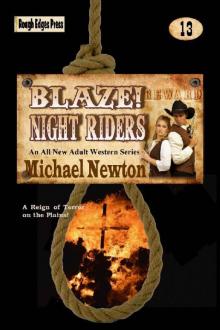 Blaze! Night Riders
Blaze! Night Riders How to Write Action Adventure Novels
How to Write Action Adventure Novels Blaze! Bad Medicine
Blaze! Bad Medicine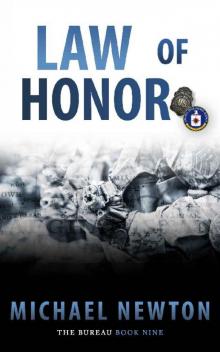 Law of Honor
Law of Honor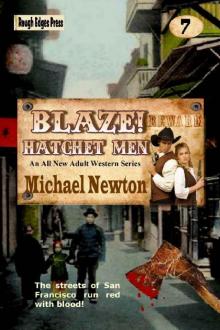 Blaze! Hatchet Men
Blaze! Hatchet Men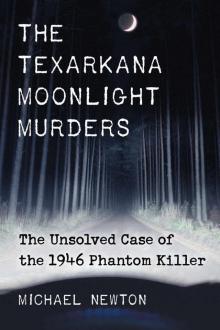 The Texarkana Moonlight Murders
The Texarkana Moonlight Murders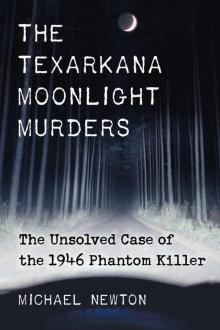 The Texarkana Moonlight Murders: The Unsolved Case of the 1946 Phantom Killer
The Texarkana Moonlight Murders: The Unsolved Case of the 1946 Phantom Killer